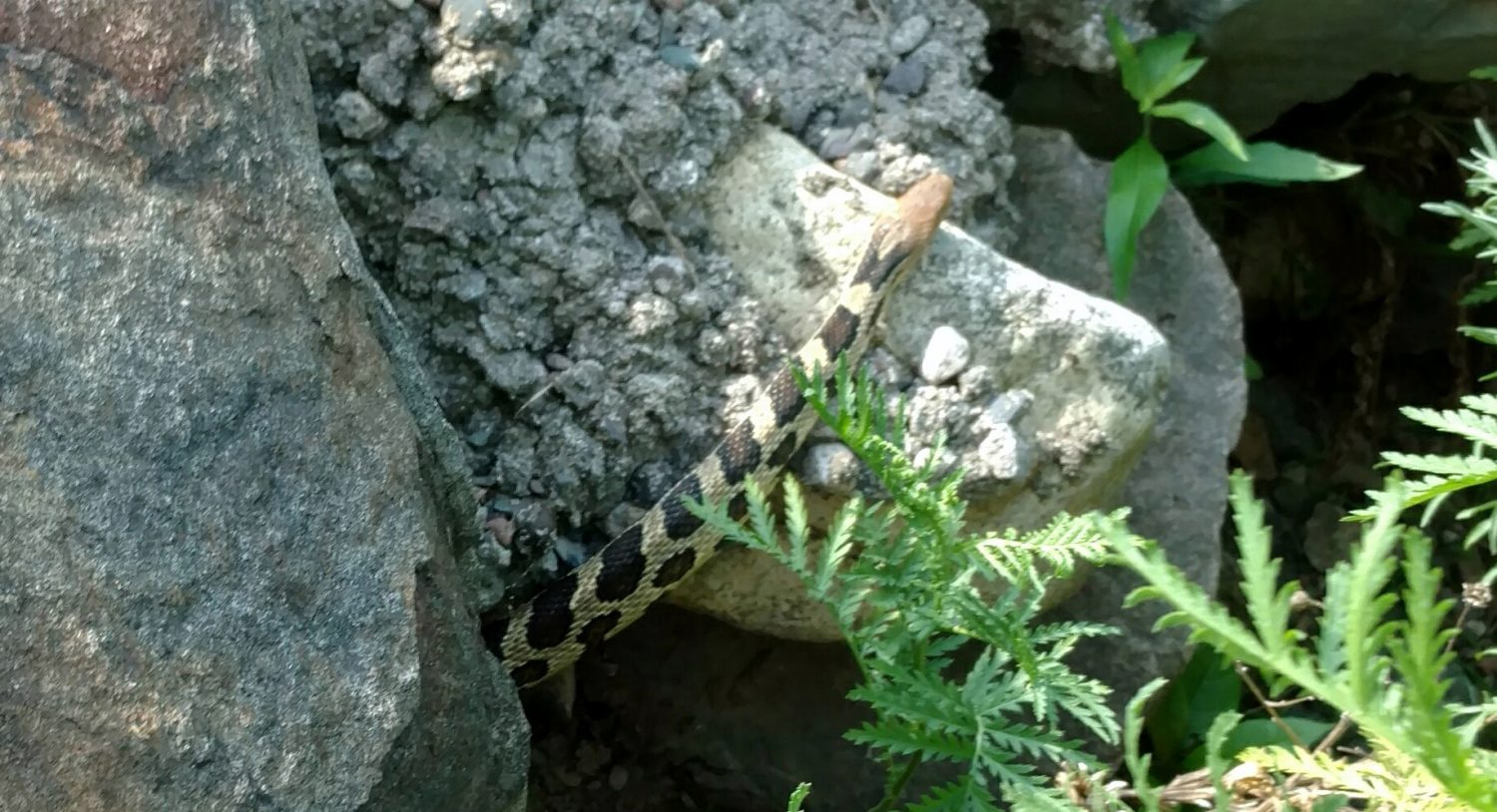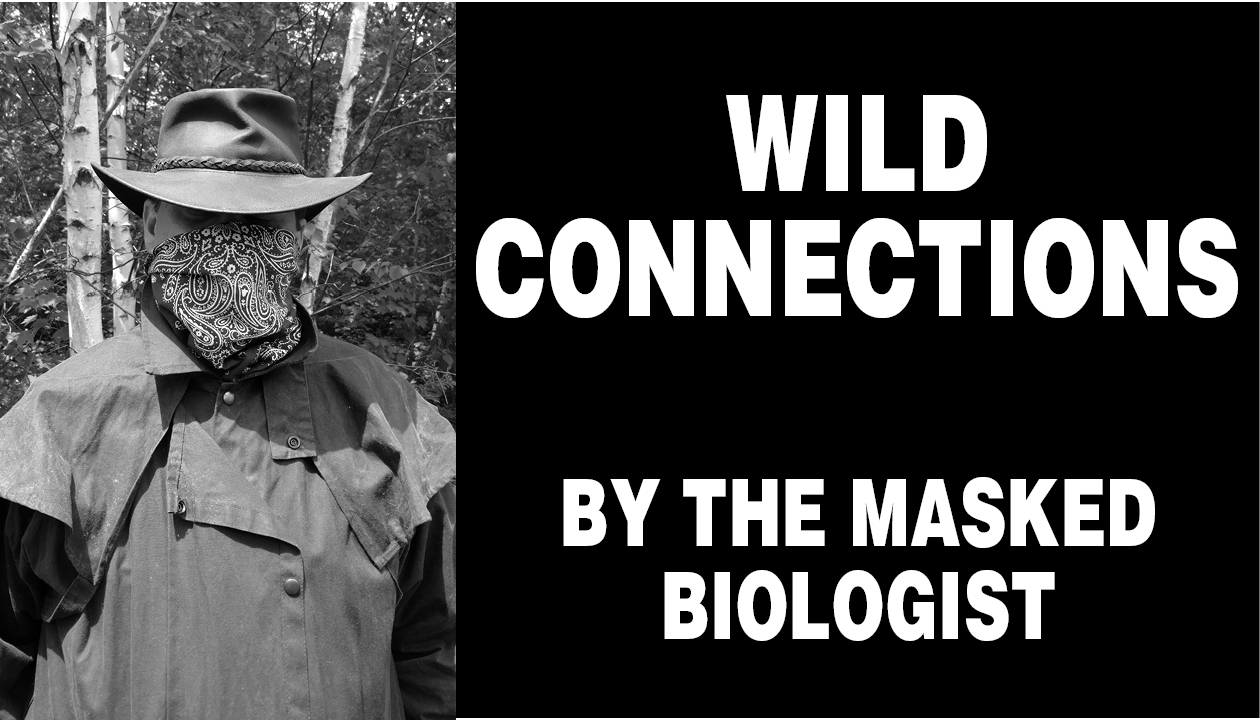WILD CONNECTIONS

SHEDDING LIGHT ON THE PINE SNAKE
BY THE MASKED BIOLOGIST
 On a recent outing with the family, one of my kids told me they saw a shed snake skin in the rocks along a riverbank we were exploring. I can never pass up a chance to pick up a shed skin, so I asked them to show me. When I picked it up, I could tell the skin was very fresh. Given the size, I surmised it to be a western fox snake, sometimes called a pine snake here in the Northwoods.
On a recent outing with the family, one of my kids told me they saw a shed snake skin in the rocks along a riverbank we were exploring. I can never pass up a chance to pick up a shed skin, so I asked them to show me. When I picked it up, I could tell the skin was very fresh. Given the size, I surmised it to be a western fox snake, sometimes called a pine snake here in the Northwoods.
My wife, Mrs. Masked Biologist, is not a snake enthusiast, especially when surprised by one. I tried to look for the snake in the surrounding rocks, but I couldn’t find it. A short time later, however, it made an appearance. It was likely going to head toward the water for a drink; after going through the process of ecdysis, or skin molt, snakes are usually very thirsty. They also feel very vulnerable, so as the snake emerged from its den, I tried to get everyone to back up and give it space.
I snapped a couple of photos for this article and backed away myself. The snake was very wary, however, and reluctantly backed into its hole. We left the area promptly hoping it would feel safe to re-emerge, get a drink, maybe soothe its tender new skin with a cool swim then stretch out on a warm rock in the sun. Ecdysis is a very stressful experience for a snake, lasting from several days to a couple of weeks. I am sure it was relieved.
The western fox snake is often mistaken for a more dangerous snake. They are light gray or brown with darker brown blotches on their back, hence often mistaken for rattlesnakes. Furthermore, they use a rattlesnake-like defense behavior. When threatened, they coil up, and vibrate their tail very quickly. If they are in gravel or dry leaves, this makes a startling rattle sound.
They also have a copper-colored head, which leads some observers to misidentify them as copperheads. They are a foot long when they emerge from their eggs; fully grown, they can get up to six feet long. These snakes are harmless to humans, though. They are not poisonous.
Like many other Wisconsin snake species, they are constrictors, so they grasp their prey and wrap it up with their body to compress it until their lungs and heart cannot function. Then they unhinge their jaws, and swallow the animal whole, starting with the head. They can swallow animals up to five times the diameter of their head, which means that they can eat mice, chipmunks, ground squirrels, birds, rabbits, frogs and even other snakes.
These snakes return to the same winter hibernation spot, or hibernaculum, year after year. During the rest of the year, they use dens that suit them in rock piles, in old stumps or logs. These snakes may seem large and threatening, but if you see them near your home or cabin, they are likely helping you control your local rodent population.
I have been concerned that the recent record-breaking severe winter had taken its toll on these creatures, as I have seen very few snakes in the last two years. I was happy to see this snake doing so well in a high traffic area, and was pleased to see how excited my kids were to see the skin — and the snake—on one of our family adventures.
The Masked Biologist earned a bachelor of science degree from a university with a highly regarded wildlife biology program. He has work for natural resource agencies from the Rocky Mountains, across the Great Plains and into the Midwest, which provided opportunities to work with a variety of common and rare fish, plant and wildlife species. Follow The Masked Biologist on Facebook.
Leave a reply
You must be logged in to post a comment.


